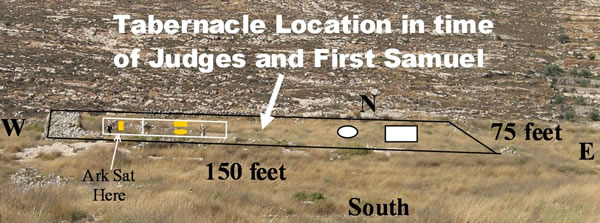
“So Hannah got up after they had finished eating and drinking in Shiloh. ‘Eli the cohen was sitting on his seat by the doorpost of the temple of Adonai.”-1 Samuel 1:9
Following on the heels of yesterday’s post, we’re in the process of trying to understand word HEKAL which normally means “temple”…
However, this is the first time this word appears in Scripture in reference to God’s earthly dwelling place.
And if it does really mean “temple” here in 1 Samuel, that means what Solomon built hundreds of years later was NOT the 1st Temple…
Which means we’ve gotta big time contradiction on our hands here homies.
So let’s dig into this a bit.
The first thing you should know is that ALL languages without exception originate from one common source starting with Noah and his offspring.
It wasn’t until what was one common language became confused at the Tower of Babel that mankind developed different languages and dialects.
The second thing you should understand is how the Hebrew language evolved.
It originated from two other cousin languages know as Ugarit and Akkadian.
Finally, do you remember our discussion about how alphabets came about?
To recap, letters and characters were simply a way to record how a certain word sounded when said out loud.
Which means depending on the dialect, the spelling of a word changed depending on the region.
For example, take the word “water” for instance.
Most Americans would pronounce it like “wahter”.
But if you were raised in Philadelphia, you’d say it like “wooder” or “wooter”.
Or take the word “downtown” for instance.
If you were chillin’ in the Pittsburgh area, you’d notice the sudden disappearance of “w’s” in the the word.
So instead of hearing downtown, you’d hear the word as “dahntahn”.
Of course, the spelling for these words have been standardized to be written out as “water” and “downtown”…
But in the olden days, words were spelled out as they sounded to our ears.
And Hebrew was no different.
Ya feel me homies?
Okay, with that thought in mind, let’s now direct our attention back to the Hebrew word HEKAL.
In the Ugarit language (a tongue that came before Hebrew), there is a typical word used to refer to a large house that was also sometimes used to refer to a “temple”.
That word is EGAL.
Now the “g” in this word was pronounced with a very harsh-sounding guttural sound.
My point is I think it’s easy to imagine how the Ugarit EGAL eventually transitioned to EKAL…
Especially when you take into account that the Biblical “h” sound is almost silent…
Are you with me?
Therefore, the real meaning of the word HEKAL during the days of 1 Samuel meant a “large house” or a “large structure” and NOT a temple.
It eventually came to mean the “Temple” later on.
So what we have in verse 9 is Hannah praying at some kind of porch or large hall located in front of the Tabernacle.
And if you actually visit Shiloh today, you can see the ancient holes that were bored into the rock used to hold up large posts.
This is evidence there was a permanent structure constructed in front of the Tabernacle that served multiple purposes such as being a dining hall for worshippers and the Levites to eat the meat from the sacrifices.
Over and out.



Leave a Reply